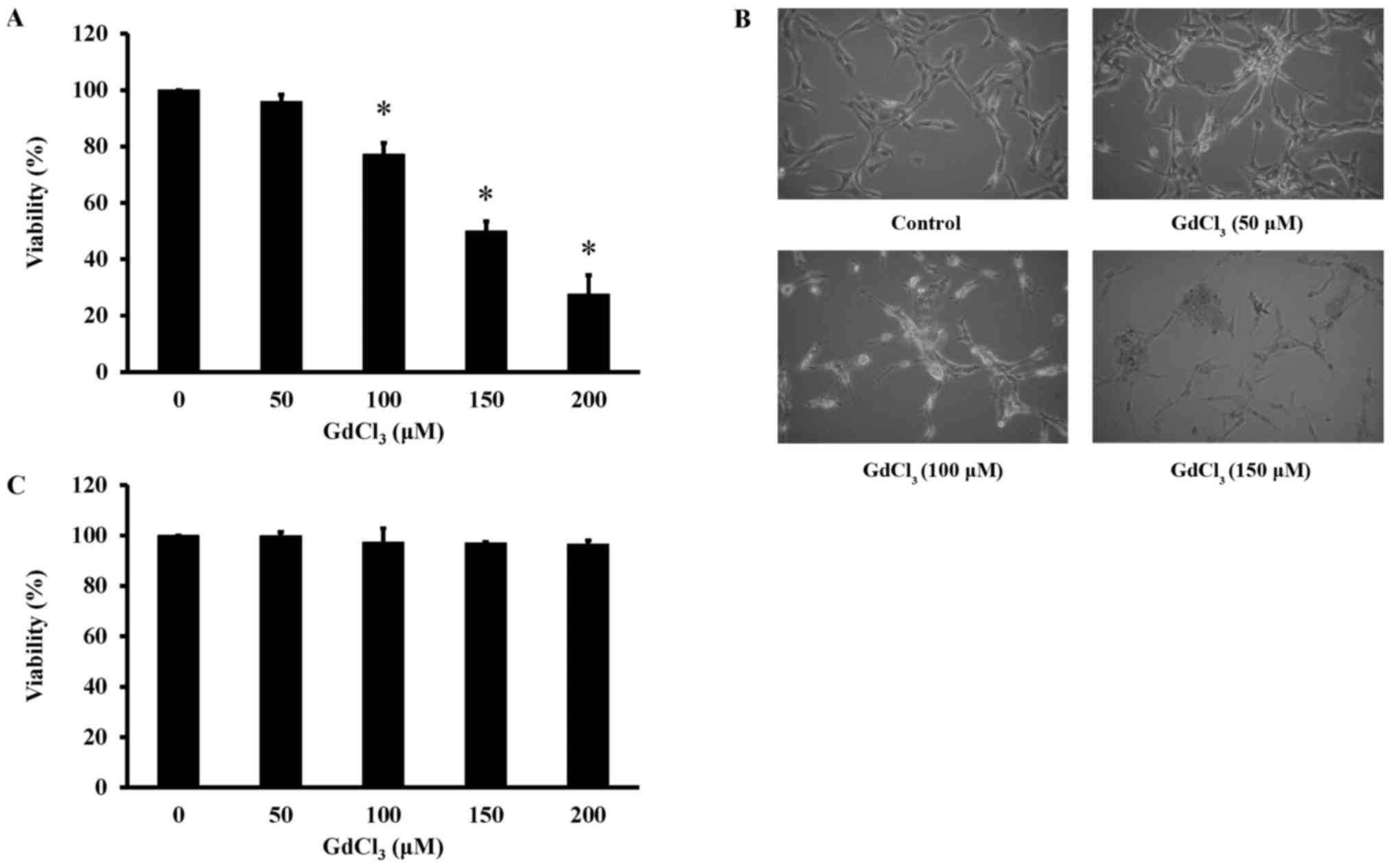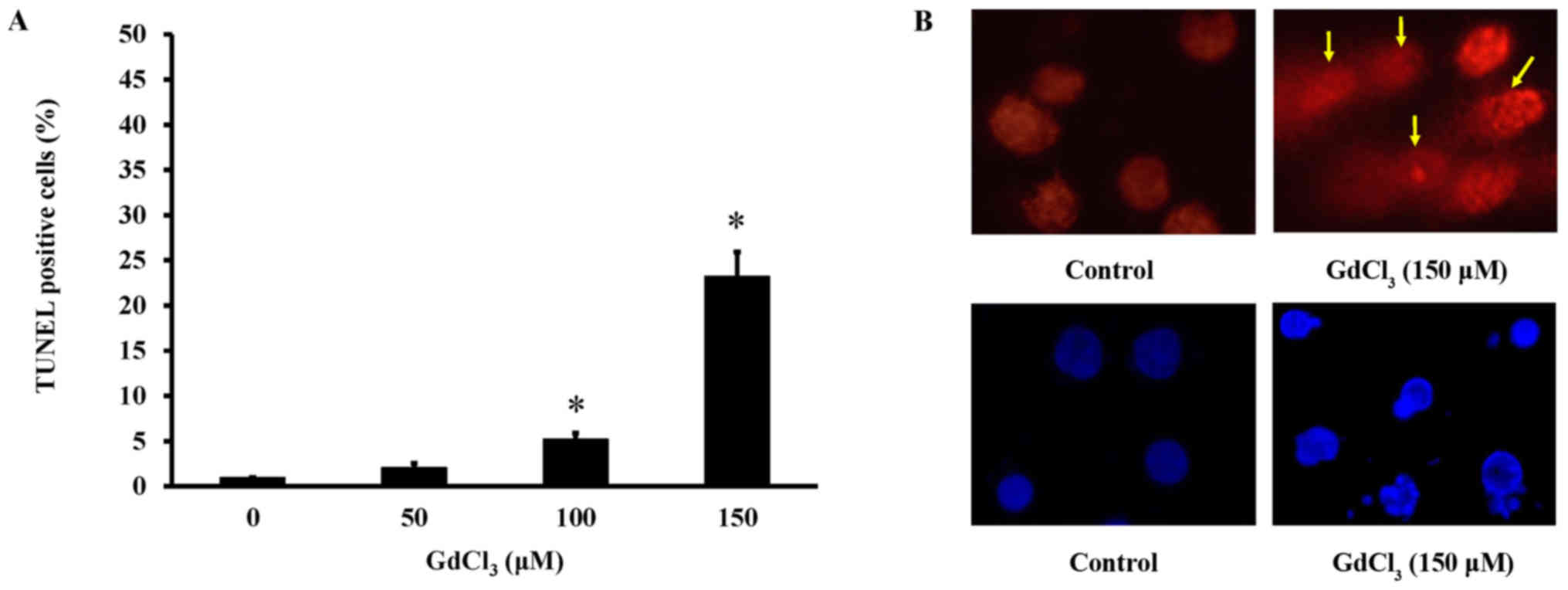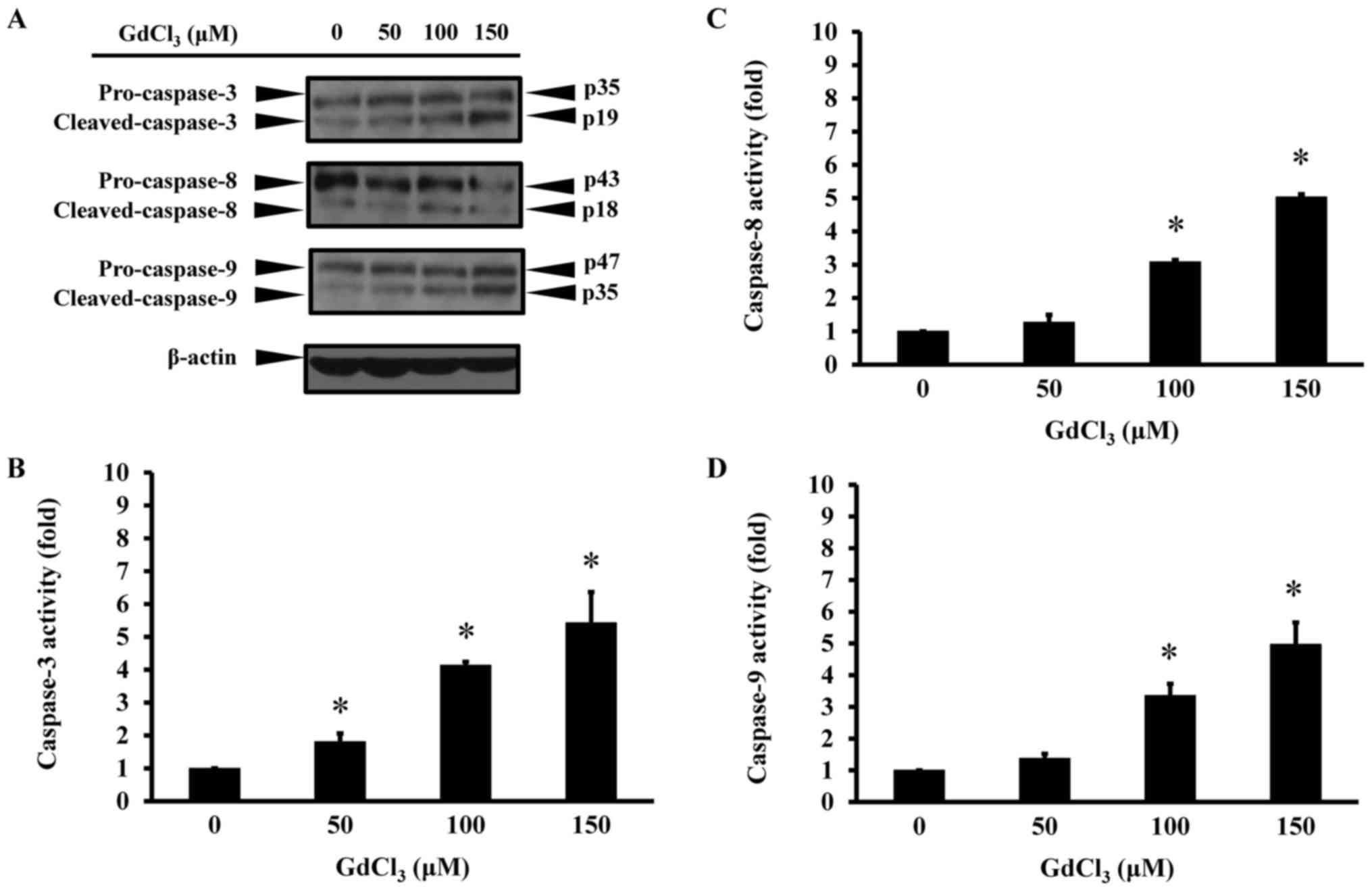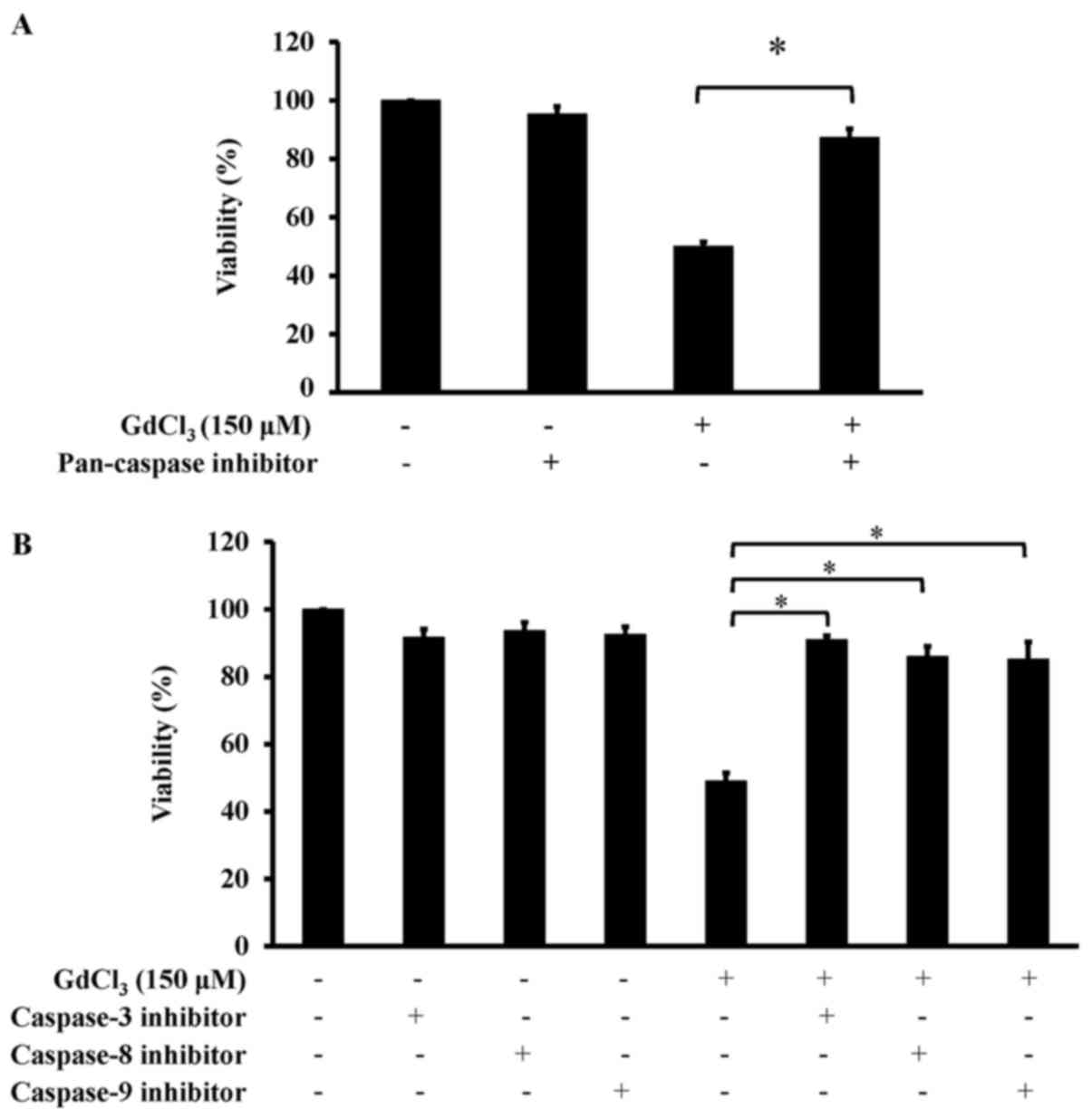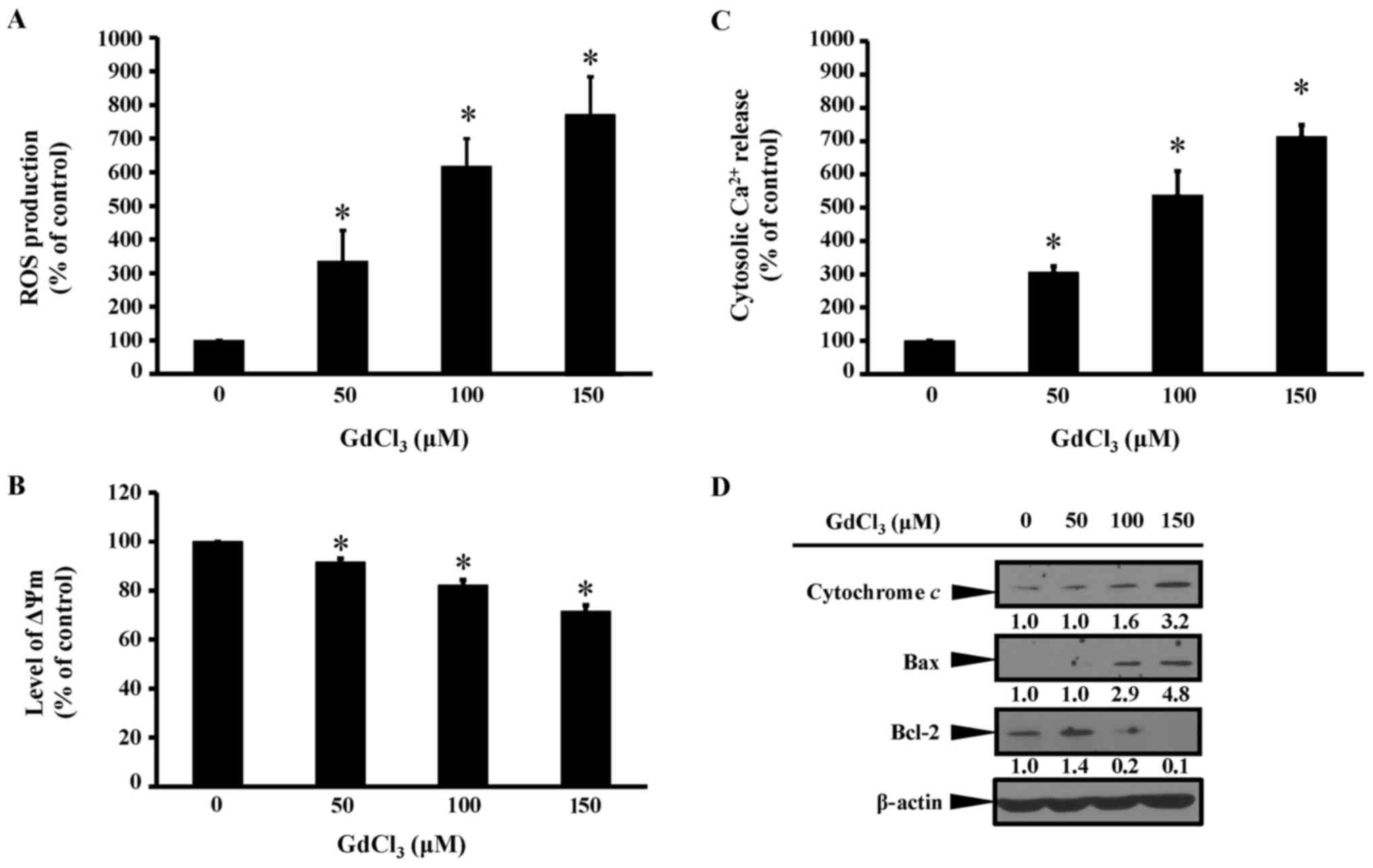|
1
|
Miranda A, Blanco-Prieto M, Sousa J, Pais
A and Vitorino C: Breaching barriers in glioblastoma. Part I:
Molecular pathways and novel treatment approaches. Int J Pharm.
531:372–388. 2017. View Article : Google Scholar : PubMed/NCBI
|
|
2
|
Perry A and Wesseling P: Histologic
classification of gliomas. Handb Clin Neurol. 134:71–95. 2016.
View Article : Google Scholar : PubMed/NCBI
|
|
3
|
Sanai N and Berger MS: Surgical oncology
for gliomas: The state of the art. Nat Rev Clin Oncol. 15:112–125.
2018. View Article : Google Scholar : PubMed/NCBI
|
|
4
|
Nam JY and de Groot JF: Treatment of
Glioblastoma. J Oncol Pract. 13:629–638. 2017. View Article : Google Scholar : PubMed/NCBI
|
|
5
|
Dréan A, Goldwirt L, Verreault M, Canney
M, Schmitt C, Guehennec J, Delattre JY, Carpentier A and Idbaih A:
Blood-brain barrier, cytotoxic chemotherapies and glioblastoma.
Expert Rev Neurother. 16:1285–1300. 2016. View Article : Google Scholar : PubMed/NCBI
|
|
6
|
Zhan C and Lu W: The blood-brain/tumor
barriers: Challenges and chances for malignant gliomas targeted
drug delivery. Curr Pharm Biotechnol. 13:2380–2387. 2012.
View Article : Google Scholar : PubMed/NCBI
|
|
7
|
Zhao YY, Yang R, Xiao M, Guan MJ, Zhao N
and Zeng T: Kupffer cells activation promoted binge
drinking-induced fatty liver by activating lipolysis in white
adipose tissues. Toxicology. 390:53–60. 2017. View Article : Google Scholar : PubMed/NCBI
|
|
8
|
Tsai YF, Huang CW, Chiang JH, Tsai FJ, Hsu
YM, Lu CC, Hsiao CY and Yang JS: Gadolinium chloride elicits
apoptosis in human osteosarcoma U-2 OS cells through extrinsic
signaling, intrinsic pathway and endoplasmic reticulum stress.
Oncol Rep. 36:3421–3426. 2016. View Article : Google Scholar : PubMed/NCBI
|
|
9
|
Wu Y, Wang Y, Li M, Yang X, Gong J and
Zhang W: Gadolinium chloride suppresses acute rejection and induces
tolerance following rat liver transplantation by inhibiting
Kupffer-cell activation. Exp Ther Med. 8:1777–1782. 2014.
View Article : Google Scholar : PubMed/NCBI
|
|
10
|
Hou CC, Feng M, Wang K and Yang XG:
Lanthanides inhibit adipogenesis with promotion of cell
proliferation in 3T3-L1 preadipocytes. Metallomics. 5:715–722.
2013. View Article : Google Scholar : PubMed/NCBI
|
|
11
|
Ye L, Shi Z, Liu H, Yang X and Wang K:
GdCl3 induced Hep G2 cell death through mitochondrial and external
death pathways without significant elevation of ROS generation.
Biol Trace Elem Res. 151:148–155. 2013. View Article : Google Scholar : PubMed/NCBI
|
|
12
|
Yan L, Zhu TB, Wang LS, Pan SY, Tao ZX,
Yang Z, Cao K and Huang J: Inhibitory effect of hepatocyte growth
factor on cardiomyocytes apoptosis is partly related to reduced
calcium sensing receptor expression during a model of simulated
ischemia/reperfusion. Mol Biol Rep. 38:2695–2701. 2011. View Article : Google Scholar : PubMed/NCBI
|
|
13
|
Yang K, Du C, Cheng Y, Li Y, Gong J and
Liu Z: Augmenter of liver regeneration promotes hepatic
regeneration depending on the integrity of Kupffer cell in rat
small-for-size liver transplantation. J Surg Res. 183:922–928.
2013. View Article : Google Scholar : PubMed/NCBI
|
|
14
|
Lu CC, Yang JS, Chiang JH, Hour MJ, Lin
KL, Lee TH and Chung JG: Cell death caused by quinazolinone HMJ-38
challenge in oral carcinoma CAL 27 cells: dissections of
endoplasmic reticulum stress, mitochondrial dysfunction and tumor
xenografts. Biochim Biophys Acta. 1840:2310–2320. 2014. View Article : Google Scholar : PubMed/NCBI
|
|
15
|
Chiang JH, Yang JS, Lu CC, Hour MJ, Liu
KC, Lin JH, Lee TH and Chung JG: Effect of DNA damage response by
quinazolinone analogue HMJ-38 on human umbilical vein endothelial
cells: evidence for γH2A.X and DNA-PK-dependent pathway. Hum Exp
Toxicol. 33:590–601. 2014. View Article : Google Scholar : PubMed/NCBI
|
|
16
|
Chang CH, Lee CY, Lu CC, Tsai FJ, Hsu YM,
Tsao JW, Juan YN, Chiu HY, Yang JS and Wang CC: Resveratrol-induced
autophagy and apoptosis in cisplatin-resistant human oral cancer
CAR cells: A key role of AMPK and Akt/mTOR signaling. Int J Oncol.
50:873–882. 2017. View Article : Google Scholar : PubMed/NCBI
|
|
17
|
Chang HP, Lu CC, Chiang JH, Tsai FJ, Juan
YN, Tsao JW, Chiu HY and Yang JS: Pterostilbene modulates the
suppression of multidrug resistance protein 1 and triggers
autophagic and apoptotic mechanisms in cisplatin-resistant human
oral cancer CAR cells via AKT signaling. Int J Oncol. Mar
2–2018.(Epub ahead of print). View Article : Google Scholar :
|
|
18
|
Chiu YJ, Hour MJ, Jin YA, Lu CC, Tsai FJ,
Chen TL, Ma H, Juan YN and Yang JS: Disruption of IGF-1R signaling
by a novel quinazoline derivative, HMJ-30, inhibits invasiveness
and reverses epithelial-mesenchymal transition in osteosarcoma U-2
OS cells. Int J Oncol. Mar 16–2018;(Epub ahead of print).
|
|
19
|
Lu CC, Yang JS, Huang AC, Hsia TC, Chou
ST, Kuo CL, Lu HF, Lee TH, Wood WG and Chung JG: Chrysophanol
induces necrosis through the production of ROS and alteration of
ATP levels in J5 human liver cancer cells. Mol Nutr Food Res.
54:967–976. 2010. View Article : Google Scholar : PubMed/NCBI
|
|
20
|
Jensen RL: Brain tumor hypoxia:
Tumorigenesis, angiogenesis, imaging, pseudoprogression, and as a
therapeutic target. J Neurooncol. 92:317–335. 2009. View Article : Google Scholar : PubMed/NCBI
|
|
21
|
Liu Y, Hashizume K, Samoto K, Sugita M,
Ningaraj N, Asotra K and Black KL: Repeated, short-term ischemia
augments bradykinin-mediated opening of the blood-tumor barrier in
rats with RG2 glioma. Neurol Res. 23:631–640. 2001. View Article : Google Scholar : PubMed/NCBI
|
|
22
|
Robert P, Frenzel T, Factor C, Jost G,
Rasschaert M, Schuetz G, Fretellier N, Boyken J, Idée JM and
Pietsch H: Methodological aspects for preclinical evaluation of
gadolinium presence in brain tissue: critical appraisal and
suggestions for harmonization-a joint initiative. Invest Radiol.
53:499–517. 2018. View Article : Google Scholar : PubMed/NCBI
|
|
23
|
Fitzgerald RT, Agarwal V, Hoang JK,
Gaillard F, Dixon A and Kanal E: The impact of gadolinium
deposition on radiology practice: an international survey of
radiologists. Curr Probl Diagn Radiol. S0363-0188(17)30296-7. 2018.
View Article : Google Scholar : PubMed/NCBI
|
|
24
|
Shen L, Yang A, Yao P, Sun X, Chen C, Mo
C, Shi L, Chen Y and Liu Q: Gadolinium promoted proliferation in
mouse embryo fibroblast NIH3T3 cells through Rac and PI3K/Akt
signaling pathways. Biometals. 27:753–762. 2014. View Article : Google Scholar : PubMed/NCBI
|
|
25
|
Fu LJ, Li JX, Yang XG and Wang K:
Gadolinium-promoted cell cycle progression with enhanced S-phase
entry via activation of both ERK and PI3K signaling pathways in NIH
3T3 cells. J Biol Inorg Chem. 14:219–227. 2009. View Article : Google Scholar : PubMed/NCBI
|
|
26
|
Ferreira J, Tapia G and Videla LA: Effects
of the Kupffer cell inactivator gadolinium chloride on rat liver
oxygen uptake and content of mitochondrial cytochromes. FEBS Lett.
426:263–265. 1998. View Article : Google Scholar : PubMed/NCBI
|
|
27
|
Bögler O and Weller M: Apoptosis in
gliomas, and its role in their current and future treatment. Front
Biosci. 7:e339–e353. 2002. View
Article : Google Scholar : PubMed/NCBI
|
|
28
|
Steinbach JP and Weller M: Apoptosis in
gliomas: Molecular mechanisms and therapeutic implications. J
Neurooncol. 70:245–254. 2004. View Article : Google Scholar : PubMed/NCBI
|
|
29
|
Yang JS, Lu CC, Kuo SC, Hsu YM, Tsai SC,
Chen SY, Chen YT, Lin YJ, Huang YC, Chen CJ, et al: Autophagy and
its link to type II diabetes mellitus. Biomedicine (Taipei).
7:82017. View Article : Google Scholar : PubMed/NCBI
|
|
30
|
Yuan CH, Horng CT, Lee CF, Chiang NN, Tsai
FJ, Lu CC, Chiang JH, Hsu YM, Yang JS and Chen FA: Epigallocatechin
gallate sensitizes cisplatin-resistant oral cancer CAR cell
apoptosis and autophagy through stimulating AKT/STAT3 pathway and
suppressing multidrug resistance 1 signaling. Environ Toxicol.
32:845–855. 2017. View Article : Google Scholar : PubMed/NCBI
|
|
31
|
Pfeffer CM and Singh ATK: Apoptosis: A
Target for anticancer therapy. Int J Mol Sci. 19:192018.
|
|
32
|
Lin C, Tsai SC, Tseng MT, Peng SF, Kuo SC,
Lin MW, Hsu YM, Lee MR, Amagaya S, Huang WW, et al: AKT
serine/threonine protein kinase modulates baicalin-triggered
autophagy in human bladder cancer T24 cells. Int J Oncol.
42:993–1000. 2013. View Article : Google Scholar : PubMed/NCBI
|
|
33
|
Tsai SC, Yang JS, Peng SF, Lu CC, Chiang
JH, Chung JG, Lin MW, Lin JK, Amagaya S, Wai-Shan Chung C, et al:
Bufalin increases sensitivity to AKT/mTOR-induced autophagic cell
death in SK-HEP-1 human hepatocellular carcinoma cells. Int J
Oncol. 41:1431–1442. 2012. View Article : Google Scholar : PubMed/NCBI
|
|
34
|
Fernandes-Alnemri T, Litwack G and Alnemri
ES: CPP32, a novel human apoptotic protein with homology to
Caenorhabditis elegans cell death protein Ced-3 and mammalian
interleukin-1 beta-converting enzyme. J Biol Chem. 269:30761–30764.
1994.PubMed/NCBI
|
|
35
|
Muzio M, Chinnaiyan AM, Kischkel FC,
O'Rourke K, Shevchenko A, Ni J, Scaffidi C, Bretz JD, Zhang M,
Gentz R, et al: FLICE, a novel FADD-homologous ICE/CED-3-like
protease, is recruited to the CD95 (Fas/APO-1) death-inducing
signaling complex. Cell. 85:817–827. 1996. View Article : Google Scholar : PubMed/NCBI
|
|
36
|
Boldin MP, Goncharov TM, Goltsev YV and
Wallach D: Involvement of MACH, a novel MORT1/FADD-interacting
protease, in Fas/APO-1- and TNF receptor-induced cell death. Cell.
85:803–815. 1996. View Article : Google Scholar : PubMed/NCBI
|
|
37
|
Fernandes-Alnemri T, Armstrong RC, Krebs
J, Srinivasula SM, Wang L, Bullrich F, Fritz LC, Trapani JA,
Tomaselli KJ, Litwack G, et al: In vitro activation of CPP32 and
Mch3 by Mch4, a novel human apoptotic cysteine protease containing
two FADD-like domains. Proc Natl Acad Sci USA. 93:7464–7469. 1996.
View Article : Google Scholar : PubMed/NCBI
|
|
38
|
Duan H, Orth K, Chinnaiyan AM, Poirier GG,
Froelich CJ, He WW and Dixit VM: ICE-LAP6, a novel member of the
ICE/Ced-3 gene family, is activated by the cytotoxic T cell
protease granzyme B. J Biol Chem. 271:16720–16724. 1996. View Article : Google Scholar : PubMed/NCBI
|
|
39
|
Liu X, Kim CN, Yang J, Jemmerson R and
Wang X: Induction of apoptotic program in cell-free extracts:
Requirement for dATP and cytochrome c. Cell. 86:147–157. 1996.
View Article : Google Scholar : PubMed/NCBI
|
|
40
|
Li P, Nijhawan D, Budihardjo I,
Srinivasula SM, Ahmad M, Alnemri ES and Wang X: Cytochrome c and
dATP-dependent formation of Apaf-1/caspase-9 complex initiates an
apoptotic protease cascade. Cell. 91:479–489. 1997. View Article : Google Scholar : PubMed/NCBI
|
|
41
|
Zou H, Li Y, Liu X and Wang X: An
APAF-1.cytochrome c multimeric complex is a functional apoptosome
that activates procaspase-9. J Biol Chem. 274:11549–11556. 1999.
View Article : Google Scholar : PubMed/NCBI
|
|
42
|
Bhat TA, Chaudhary AK, Kumar S, O'Malley
J, Inigo JR, Kumar R, Yadav N and Chandra D: Endoplasmic
reticulum-mediated unfolded protein response and mitochondrial
apoptosis in cancer. Biochim Biophys Acta Rev Cancer. 1867:58–66.
2017. View Article : Google Scholar : PubMed/NCBI
|
|
43
|
Bahar E, Kim H and Yoon H: ER
Stress-mediated signaling: action potential and Ca (2+) as key
players. Int J Mol Sci. 17:172016. View Article : Google Scholar
|
|
44
|
Xia Q, Feng X, Huang H, Du L, Yang X and
Wang K: Gadolinium-induced oxidative stress triggers endoplasmic
reticulum stress in rat cortical neurons. J Neurochem. 117:38–47.
2011. View Article : Google Scholar : PubMed/NCBI
|
|
45
|
Feng X, Xia Q, Yuan L, Yang X and Wang K:
Impaired mitochondrial function and oxidative stress in rat
cortical neurons: implications for gadolinium-induced
neurotoxicity. Neurotoxicology. 31:391–398. 2010. View Article : Google Scholar : PubMed/NCBI
|
|
46
|
Eblen ST: Extracellular-regulated kinases:
signaling from Ras to ERK substrates to control biological
outcomes. Adv Cancer Res. 138:99–142. 2018. View Article : Google Scholar : PubMed/NCBI
|
|
47
|
Faghfuri E, Nikfar S, Niaz K, Faramarzi MA
and Abdollahi M: Mitogen-activated protein kinase (MEK) inhibitors
to treat melanoma alone or in combination with other kinase
inhibitors. Expert Opin Drug Metab Toxicol. 14:317–330. 2018.
View Article : Google Scholar : PubMed/NCBI
|
|
48
|
Gkouveris I and Nikitakis NG: Role of JNK
signaling in oral cancer: A mini review. Tumour Biol.
39:10104283177116592017. View Article : Google Scholar : PubMed/NCBI
|
|
49
|
Peluso I, Yarla NS, Ambra R, Pastore G and
Perry G: MAPK signalling pathway in cancers: Olive products as
cancer preventive and therapeutic agents. Semin Cancer Biol. Sep
11–2017.(Epub ahead of print). View Article : Google Scholar : PubMed/NCBI
|
|
50
|
Lu Z and Xu S: ERK1/2 MAP kinases in cell
survival and apoptosis. IUBMB Life. 58:621–631. 2006. View Article : Google Scholar : PubMed/NCBI
|
|
51
|
Subramanian M and Shaha C: Up-regulation
of Bcl-2 through ERK phosphorylation is associated with human
macrophage survival in an estrogen microenvironment. J Immunol.
179:2330–2338. 2007. View Article : Google Scholar : PubMed/NCBI
|
|
52
|
Potapova O, Anisimov SV, Gorospe M,
Dougherty RH, Gaarde WA, Boheler KR and Holbrook NJ: Targets of
c-Jun NH (2)-terminal kinase 2-mediated tumor growth regulation
revealed by serial analysis of gene expression. Cancer Res.
62:3257–3263. 2002.PubMed/NCBI
|
|
53
|
Yu C, Minemoto Y, Zhang J, Liu J, Tang F,
Bui TN, Xiang J and Lin A: JNK suppresses apoptosis via
phosphorylation of the proapoptotic Bcl-2 family protein BAD. Mol
Cell. 13:329–340. 2004. View Article : Google Scholar : PubMed/NCBI
|
|
54
|
Flacke JP, Kumar S, Kostin S, Reusch HP
and Ladilov Y: Acidic preconditioning protects endothelial cells
against apoptosis through p38- and Akt-dependent Bcl-xL
overexpression. Apoptosis. 14:90–96. 2009. View Article : Google Scholar : PubMed/NCBI
|
|
55
|
Kim MJ, Choi SY, Park IC, Hwang SG, Kim C,
Choi YH, Kim H, Lee KH and Lee SJ: Opposing roles of c-Jun
NH2-terminal kinase and p38 mitogen-activated protein kinase in the
cellular response to ionizing radiation in human cervical cancer
cells. Mol Cancer Res. 6:1718–1731. 2008. View Article : Google Scholar : PubMed/NCBI
|
|
56
|
Hamanoue M, Sato K and Takamatsu K:
Inhibition of p38 mitogen-activated protein kinase-induced
apoptosis in cultured mature oligodendrocytes using SB202190 and
SB203580. Neurochem Int. 51:16–24. 2007. View Article : Google Scholar : PubMed/NCBI
|
|
57
|
Lim SJ, Lee YJ and Lee E: p38MAPK
inhibitor SB203580 sensitizes human SNU-C4 colon cancer cells to
exisulind-induced apoptosis. Oncol Rep. 16:1131–1135.
2006.PubMed/NCBI
|
|
58
|
Wang P, Zou XM, Huang J, Zhang TL and Wang
K: Gadolinium inhibits prostate cancer PC3 cell migration and
suppresses osteoclast differentiation in vitro. Cell Biol Int.
35:1159–1167. 2011. View Article : Google Scholar : PubMed/NCBI
|















